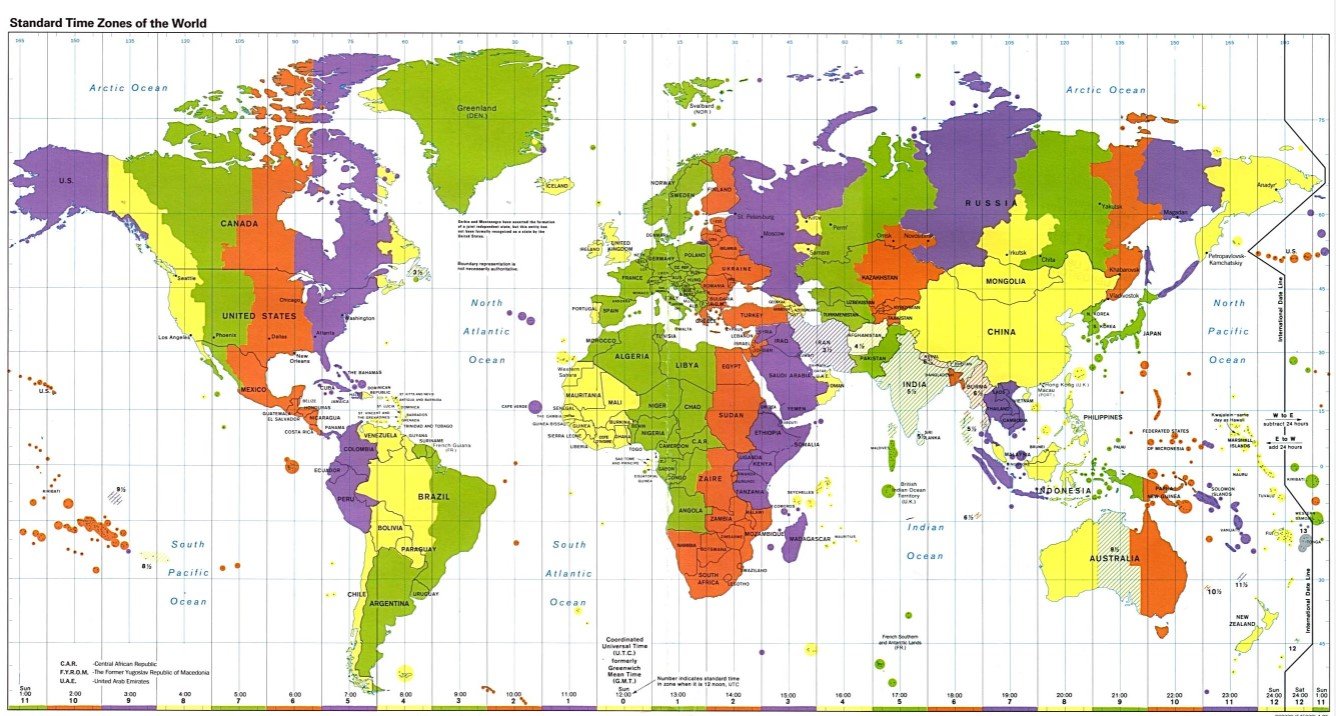In a world where the boundaries of work and personal life are increasingly blurred, remote work has emerged as a transformative solution. As we navigate this new era of flexibility and freedom, it becomes crucial to acknowledge the role of local customs in shaping remote work etiquette. From the bustling streets of Tokyo to the serene villages of Provence, each region brings its own unique set of customs and traditions that influence how we communicate, collaborate, and conduct ourselves in the virtual realm. Understanding and respecting these local customs not only fosters a sense of cultural appreciation but also enhances productivity and strengthens global connections. So, let us embark on a journey to explore the fascinating interplay between local customs and remote work etiquette, unraveling the secrets to successful virtual collaboration across borders and time zones.
Table of Contents
- The Role of Local Customs in Remote Work Etiquette:
- Understanding Cultural Nuances for Effective Remote Collaboration
- Navigating Time Zones and Communication Styles in a Global Workforce
- Adapting to Local Customs: Dress Code, Language, and Communication Etiquette
- Respecting Holidays and Celebrations: Balancing Work and Cultural Observances
- Building Trust and Inclusion: Embracing Diversity in Remote Teams
- Q&A
- The Way Forward

The Role of Local Customs in Remote Work Etiquette:
When it comes to remote work etiquette, it is important to consider the role of local customs. As we navigate the global landscape of remote work, understanding and respecting the customs and traditions of different regions can greatly enhance collaboration and foster positive working relationships.
One key aspect to consider is communication style. In some cultures, direct and assertive communication is valued, while in others, a more indirect and polite approach is preferred. Being aware of these differences can help avoid misunderstandings and promote effective communication. It may be helpful to adapt your communication style to align with the customs of your colleagues, whether it’s using more formal language or being mindful of the use of humor.
Another important consideration is time management. Different cultures have varying attitudes towards punctuality and deadlines. While some cultures prioritize strict adherence to schedules, others may have a more relaxed approach. Understanding these differences can help you navigate deadlines and expectations, ensuring that you are respectful of your colleagues’ customs and preferences.
- Be mindful of cultural norms when communicating with colleagues from different regions.
- Adapt your communication style to align with local customs, whether it’s using more formal language or being mindful of humor.
- Respect different attitudes towards time management and deadlines.
By acknowledging and respecting local customs in remote work etiquette, we can foster a more inclusive and harmonious work environment, where diverse perspectives are valued and collaboration thrives.

Understanding Cultural Nuances for Effective Remote Collaboration
When it comes to remote collaboration, understanding cultural nuances is crucial for fostering effective communication and teamwork. Working with colleagues from different cultural backgrounds can bring a wealth of diverse perspectives and ideas to the table, but it also requires sensitivity and awareness to ensure smooth collaboration.
Here are some key cultural nuances to consider:
- Communication Styles: Different cultures have varying communication styles, ranging from direct and assertive to indirect and subtle. Being aware of these differences can help avoid misunderstandings and promote clearer communication. It’s important to adapt your communication style to accommodate your remote team members’ preferences.
- Time Management: Time perception can differ across cultures, with some cultures valuing punctuality and efficiency, while others prioritize flexibility and a more relaxed approach. Understanding these differences can help set realistic expectations and avoid conflicts related to deadlines and schedules.
- Hierarchy and Decision-Making: Hierarchical structures and decision-making processes can vary greatly across cultures. Some cultures may have a more top-down approach, while others emphasize consensus and collaboration. Recognizing these differences can help navigate power dynamics and ensure everyone’s voices are heard.
By acknowledging and respecting cultural nuances, remote teams can create an inclusive and collaborative environment that maximizes the potential of each team member. Embracing diversity and actively seeking to understand cultural differences can lead to stronger relationships, increased productivity, and innovative solutions.

Navigating Time Zones and Communication Styles in a Global Workforce
When working in a global workforce, navigating time zones and communication styles can be a challenge. However, with a little bit of flexibility and understanding, it is possible to overcome these obstacles and foster effective collaboration.
Time Zones:
- Coordinate schedules: Establish a shared calendar or scheduling tool to help team members easily identify overlapping working hours.
- Be mindful of time differences: Respect the varying time zones and try to schedule meetings or deadlines that accommodate everyone’s availability as much as possible.
- Communicate availability: Clearly communicate your working hours and availability to your team members, so they know when to expect a response from you.
Communication Styles:
- Adapt to cultural differences: Different cultures may have different communication styles. Be open-minded and adaptable to ensure effective communication with colleagues from diverse backgrounds.
- Use clear and concise language: When communicating across different languages, it is important to use simple and straightforward language to avoid misunderstandings.
- Active listening: Practice active listening to ensure you understand the message being conveyed and to show respect for your colleagues’ perspectives.
By being mindful of time zones and adapting to different communication styles, a global workforce can thrive and achieve successful collaboration. Embracing diversity and finding common ground will lead to stronger relationships and more efficient teamwork.

Adapting to Local Customs: Dress Code, Language, and Communication Etiquette
When traveling to a new destination, it’s essential to embrace the local customs to fully immerse yourself in the culture. Understanding and respecting the dress code, language, and communication etiquette of a place can greatly enhance your experience and help you connect with the locals on a deeper level.
Dress Code:
- Research the traditional attire of the region you are visiting and try to incorporate elements of it into your wardrobe.
- Respect religious and cultural sensitivities by dressing modestly when required.
- Consider the climate and dress accordingly to ensure comfort while adhering to local norms.
Language:
- Learn a few basic phrases in the local language, such as greetings and thank you.
- Use a translation app or carry a pocket dictionary to help bridge any language barriers.
- Show patience and be willing to communicate through gestures and body language when necessary.
Communication Etiquette:
- Observe and adapt to the local communication style, whether it’s more direct or indirect.
- Be mindful of cultural norms regarding personal space and physical contact.
- Listen actively and show respect by avoiding interrupting or speaking over others.
By embracing the local customs of a destination, you not only show respect for the culture but also open yourself up to unique experiences and meaningful connections with the people you encounter along the way.
Respecting Holidays and Celebrations: Balancing Work and Cultural Observances
When it comes to respecting holidays and celebrations, finding a balance between work and cultural observances is crucial. Recognizing and honoring the diversity of traditions and customs within a workplace fosters inclusivity and strengthens the sense of community among employees. Here are a few tips to help strike that balance:
- Be aware of cultural observances: Take the time to educate yourself about the various holidays and celebrations that your colleagues may observe. This will not only show respect but also help you understand the significance of these events.
- Plan ahead: Encourage open communication within the workplace to allow employees to share their upcoming cultural observances. By planning ahead, you can ensure that workloads are managed effectively and that necessary accommodations can be made.
- Flexible scheduling: Consider implementing flexible work schedules during important cultural observances. This can allow employees to participate in festivities without compromising their work responsibilities. It’s important to find a balance that meets both business needs and individual needs.
- Create a holiday calendar: Establish a shared calendar where employees can mark their cultural observances. This will help everyone stay informed and allow for better planning and coordination.
- Encourage cultural celebrations: Embrace the diversity within your workplace by organizing events or activities that celebrate different holidays and traditions. This can foster a sense of unity and appreciation for the various cultures represented.
Remember, respecting holidays and celebrations is not only about accommodating time off or scheduling adjustments. It’s about creating an inclusive environment where everyone feels valued and respected for their cultural backgrounds and traditions.
Building Trust and Inclusion: Embracing Diversity in Remote Teams
Creating a sense of trust and inclusion is crucial for remote teams to thrive in today’s diverse work environment. Embracing diversity not only brings a variety of perspectives and ideas to the table, but it also fosters a culture of respect and understanding.
Here are some key strategies to build trust and inclusion within your remote team:
- Encourage open communication: Establish a safe space for team members to express their thoughts and opinions. Encourage active participation in virtual meetings and provide opportunities for everyone to contribute.
- Promote cultural awareness: Celebrate and embrace the unique backgrounds and experiences of your team members. Encourage learning about different cultures, traditions, and customs to foster a sense of appreciation and respect.
- Provide equal opportunities: Ensure that all team members have equal access to resources, opportunities, and career growth. Avoid favoritism and promote a fair and inclusive work environment.
- Establish team norms: Collaboratively define team norms and expectations to create a shared understanding of how everyone should interact and communicate. This helps to set a positive tone and ensures that everyone feels valued and included.
- Encourage empathy and understanding: Foster a culture of empathy by encouraging team members to actively listen and understand each other’s perspectives. This helps to build trust and strengthens relationships within the team.
By implementing these strategies, remote teams can create an inclusive and diverse work environment where every team member feels valued, respected, and empowered to contribute their best.
Q&A
What are some local customs that can impact remote work etiquette?
Local customs such as greetings, communication styles, and work hours can greatly impact remote work etiquette. For example, in some cultures, it is customary to greet colleagues with a bow or handshake, while in others, a simple nod or verbal greeting suffices.
How can understanding local customs improve remote work etiquette?
Understanding local customs allows remote workers to adapt their communication and behavior to align with the expectations of their colleagues. This fosters better relationships, avoids misunderstandings, and promotes a more inclusive and respectful work environment.
Are there any specific customs to be aware of when working with international colleagues?
Yes, when working with international colleagues, it is important to be aware of customs related to punctuality, hierarchy, and communication styles. For instance, some cultures value punctuality more than others, while certain countries have a more hierarchical approach to decision-making.
How can remote workers learn about local customs?
Remote workers can learn about local customs by conducting research, reading books or articles about the culture, and engaging in conversations with colleagues from the specific region. Additionally, participating in cultural training programs or working with a cross-cultural coach can provide valuable insights.
What should remote workers do if they unintentionally offend someone due to a lack of understanding of local customs?
If a remote worker unintentionally offends someone due to a lack of understanding of local customs, it is important to apologize sincerely and seek to understand the cultural context. Taking the time to learn from the mistake and showing a genuine willingness to adapt can help repair relationships and prevent future misunderstandings.
How can local customs be integrated into remote work practices?
Local customs can be integrated into remote work practices by incorporating cultural awareness training, establishing clear communication guidelines, and encouraging open dialogue among team members. Additionally, creating a diverse and inclusive work environment where everyone’s customs are respected and valued is crucial.
To Wrap It Up
As we navigate the ever-evolving landscape of remote work, it becomes increasingly important to acknowledge and respect the role of local customs in our virtual interactions. The boundaries of our workspaces may have expanded, but the cultural nuances that shape our behavior remain as significant as ever.
In this article, we have explored the intricate dance between remote work etiquette and local customs, recognizing that what may be considered acceptable in one corner of the world might be perceived differently in another. From the subtle art of greetings to the unspoken rules of punctuality, we have delved into the fascinating tapestry of cultural norms that influence our virtual interactions.
By understanding and embracing these local customs, we can foster a more inclusive and harmonious remote work environment. We have learned that a simple gesture of respect, such as researching and acknowledging the customs of our colleagues, can go a long way in building meaningful connections across borders.
As we bid farewell to this exploration, let us remember that remote work is not just about technology and productivity; it is about people. It is about bridging the gaps between cultures, fostering empathy, and celebrating diversity. By weaving local customs into our remote work etiquette, we can create a tapestry of understanding that transcends physical boundaries.
So, as you embark on your remote work journey, take a moment to appreciate the rich tapestry of customs that surround you. Embrace the diversity that exists within your virtual workspace and let it inspire you to connect on a deeper level. Together, let us build a global community that thrives on respect, understanding, and the beauty of local customs.
As an affiliate, my content may feature links to products I personally use and recommend. By taking action, like subscribing or making a purchase, you’ll be supporting my work and fueling my taco cravings at the same time. Win-win, right?
Want to read more? Check out our Affiliate Disclosure page.